Author: Paula Welch
How Art Contributes To Our Overall Wellness
October 25, 2019
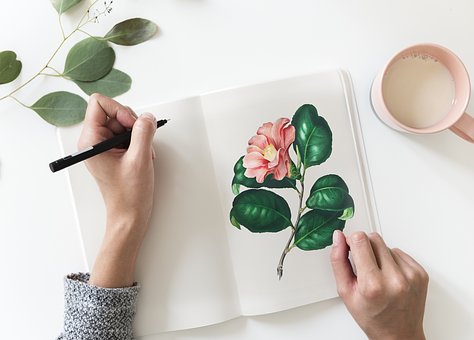
Source: pixabay.com
Art is a tremendous help to people who have mental health disorders such as anxiety, depression, bipolar disorder, attention deficit hyperactivity disorder, post-traumatic stress disorder, autism, and more. “Drawing, painting, or molding objects from clay has been scientifically proven to help people to deal with different kinds of trauma,” says Maria Cohut, PhD. It creates a healthy learning environment where there is room for improvement and wellness. It benefits people who are suffering from medical conditions not just psychologically but physically by promoting their healing process.
Studies reveal that patients who are doing art therapy show a significant improvement in their health compared to those who rely mainly on medications and aggressive interventions. For this reason, doctors use art as a complementary method in the treatment of patients with medical conditions.
Art therapy can contribute to severe medical health conditions such as cancer and heart problems. It is due to its benefits in diffusing stress which is one of the leading factors contributing to these diseases. It can also psychologically prepare patients who will undergo surgeries.
Art Therapies Used To Aid In Healing And Improvement Of Medical Conditions
Drawing
Drawing is a type of art which uses pencil, ink, charcoal, or markers to create details. Some mental health conditions such as autism can cause a person to do extraordinarily with his vision and memory, making him remember every aspect of an image in front of him.
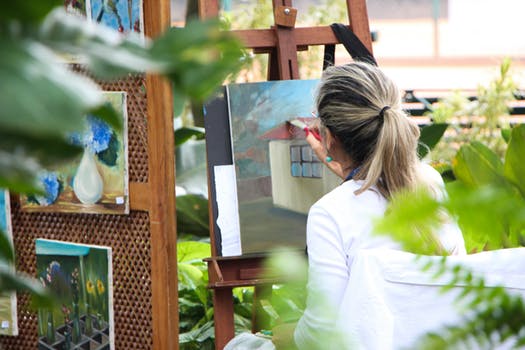
Source: pexels.com
Painting
Painting is an art which involves the use of different colors of paint to create images using paintbrushes or sometimes just the hand. It is an activity which allows patients to express their feelings and emotions freely. Sometimes, communication is a challenge for people with health conditions, and through the use of art, they can show what they confine within them. “[L]et go of results; create something that’s just for you in a drawing journal, a canvas, or whatever you have handy,” says Elizabeth Scott, MS.
Sculpting
Sculping is the use of clay, wood, or metal to mold, form, or shape an idea. The mind works with the hands to bring to life the feelings and emotions confined within a person. Whether he is happy, sad, angry, or frustrated, sculpting can be a tool to divert all the overwhelming feelings that are sometimes too much to handle.
Art can contribute to the healing and wellbeing of a person whether it is psychological or physical. That is why healthcare providers acknowledge it by prescribing and using it as an additional therapy for treating a condition.
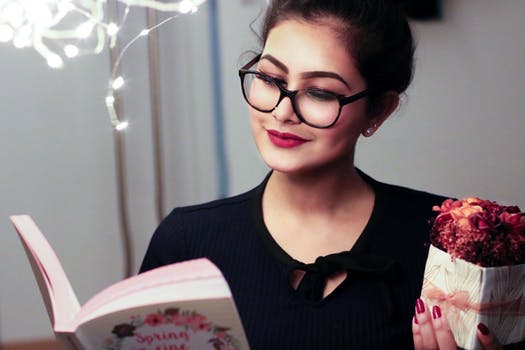
Source: pexels.com
How Art Works In Our Overall Wellness
- Art is vital as a tool for expressing oneself, and as already mentioned, some mental health conditions cause difficulty in communication. It allows for self-expression and breaks the barrier between a person and his environment. It creates a connection between the mind and the physical element of this world.
- Through art, a person can feel a sense of achievement and realize that there’s something beautiful that comes from his condition. It boosts self-esteem and self-worth making a patient understand that he is more than just his illness.
- Art promotes calmness and peace. It makes a person concentrate on one thing, avoiding distractions. It helps in diffusing stress that causes anxiety and depression. It relieves the mind with thoughts that can trigger depressive thoughts.
- Art promotes positivity. It diminishes frustrating and negative thoughts that can cause a person to feel sicker than he already is. It diverts the attention to good things rather than linger to the negativity of a condition. An ill person can continuously think about pain, missed opportunities, and mortality. Through art, the patient can consider positive thoughts and do worthwhile activities.
“In brief, creativity is increasingly being validated as a potent mind-body approach as well as a cost-effective intervention to address a variety of challenges throughout the lifespan,” says Cathy Malchiodi, PhD, LPCC.
Our overall well-being depends on how we see life in general. We are ill when we think we are. Through art, we develop a positive perspective that allows us to embrace life despite medical conditions. It makes us realize how extraordinary we can be even with our limitations.
When Art Symbolically Illustrates the Sufferings of the Mind
October 18, 2019
Art is the reflection of creativity and an outlet for stress. More than that, it is an expression of repressed emotions that can only be asserted through the stroke of a brush or the movement of a pen.
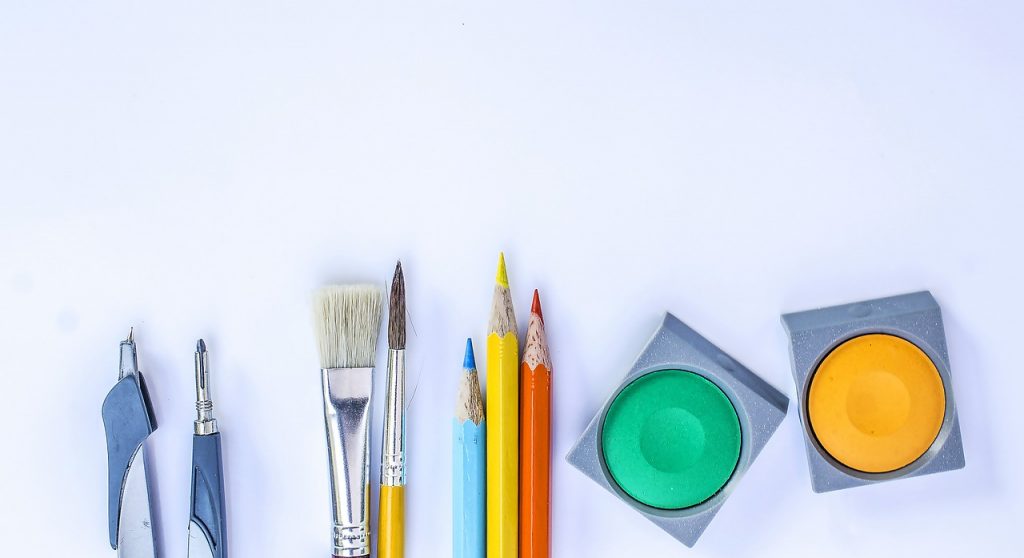
source: pixabay.com
The Influence Of Color To A Person’s Psychiatry
October 11, 2019
One area of psychiatry utilizes the method of understanding the different shades, leading to better understanding and identification of thought processes and emotions manifested by every individual. This is called color psychology.
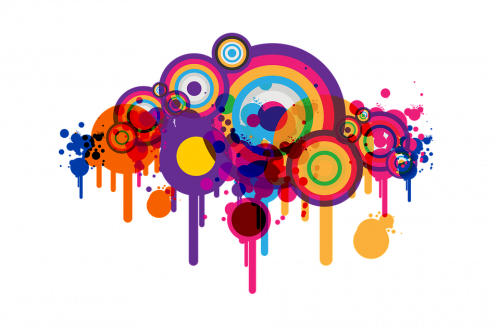
Source: pixabay.com
Color Defines How You Feel And Behave
When you enter a particular room, does the color affect your mood in some unexplainable manner? Does the sight of the shade make you feel relaxed or invigorated? Interior designers and artists have always believed that colors can significantly and dramatically affect a person’s mood and emotions which is why they are very particular with the type of shades that will be used in their craft.
In psychiatry, every color becomes a powerful tool that is utilized to communicate physiological and mental reactions non-verbally. Specific colors are also associated with physiological manifestations like eye strain, metabolism, and fluctuating blood pressure.
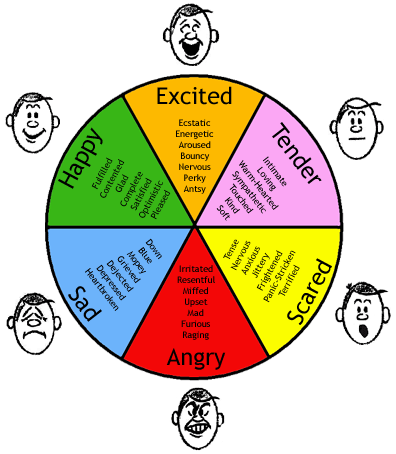
Source: wikimedia.org
How Color Speaks To Every Individual
Colors, though given specific universal meanings, are often subjective and are open to interpretation. For example, red is seen by others as the color of love, but for some, it’s a color of rage or anger. However, other shades of red evoke certain feelings of warmth, depending entirely on the spectrum the color it is affiliated to, such as red-orange or red-yellow.
Another example is blue which, for some signifies tranquility but for others, it’s the color of indifference or sadness. For licensed psychologist and journalist, Lisa Johnson Mandell, L.P., “Blue is the best color to put on to an interview because it sends out confidence and reliability. Therefore, many working uniforms or business suits are of blue color.”
Also, for Richard Shuster PsyD, a clinical psychologist, the color blue is helpful in calming our minds. He stated that “Staring at the ocean actually changes our brain waves’ frequency and puts us into a mild meditative state.” Mandell and Shuster’s statements show the differing meanings of colors.
Color perception primarily hinges on how an individual resonates with what they see and how the nostalgia of the hues make their mind react or interact. Aside from the examples provided above, what are the other usual colors that people respond to?
- Black – usually associated with mourning or death. Black is a color that represents a foreboding incident or a menacing symbol, and is also indicative of evil in some cases, mostly portrayed in pop culture or the cinemas. Black is commonly known as the opposite of white, which symbolizes negative energy.
- White – the opposite of black, which mainly represents positive energy. White is the universal symbol of peace and purity. In psychiatry, white is the preferred color in facilities so as not to provoke irrational feelings from admitted patients. White can also mean cleanliness and freshness. Designers often choose white backdrops to complement any highlight or color, even making the room seem spacious.
- Green–commonly associated with nature, green is a fresh color that represents good health, luck, and emotional tranquility. Science has suggested that green has a soothing and relaxing effect to the eyes, which is why when the eyes are strained, looking at something green is a common suggestion. Green is said to help people heal and relieve stress, and designers usually use this color to paint bedrooms and living rooms.
- Pink –being linked to femininity, romance, and love, pink, for some people, has a calming effect. Research has indicated that pink tends to have a particular impact on inmates or prisoners but then was soon found out that the soothing results are temporary and the reactions became more of agitation as they were exposed longer. Pink is also the color for qualities like compassion, softness, nurturing, and kindness.A consultant educational psychologist, Ingrid Collins, L.P., said that humans’ energy can be affected by chromatherapy also known as color therapy. She noted: “We are therefore at the most fundamental level made of energy and information, so when we add a particular colour we are adding energy into our lives.” Collins’ observation manifests the importance of color in humans’ everyday lives.
- Yellow–the first thing that would come to mind would be the color of the sun. Yellow is a bright color that often depicts warmth and cheerfulness, although due to its bright characteristic, this color can also cause eyestrain. Yellow can influence feelings of anger and frustration for some people. Due to its vibrancy, yellow can quickly capture the eyes, and for this reason, it’s the color used for advertisements or traffic signals.
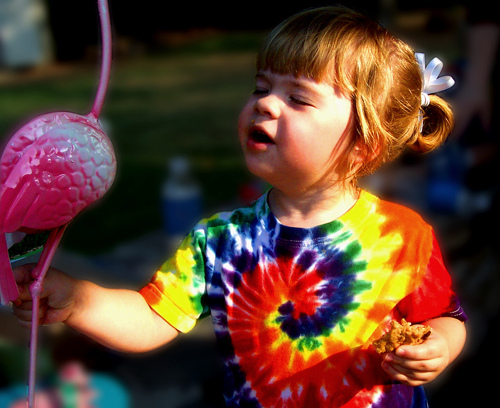
Source: flickr.com
Color Is Influential
What we see around us affects us differently; color plays a very significant part of what we do and how we feel. Depending on what the shade means to a person, it can convey powerful information, clout people’s decision, and create feelings and moods.
Exploring the Power of Creativity in Counseling: Healing Through Art and Imagination
October 4, 2019
This article will help you learn more about how art can work for most individuals. There’s something in art therapy that soothes the mind. The association is designing a serene, safe space for people where counselors can express memories that made significant changes in their lives, showcasing their skills and creativity in counseling.
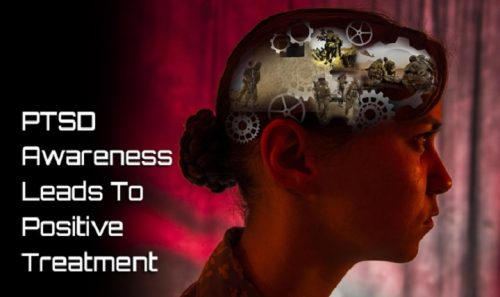
Source: health.mil
How Can Creativity Help Individuals?
Expression of arts through creativity in counseling engages a specific part of the brain that allows the processing of traumatic experiences in a different light. No wonder being artistic with treatment is required to handle such counseling profession cases.
Could The Use Of Arts Really Help Heal?
According to the Association for Creativity in Counseling (ACC), creative counseling for PTSD patients has been suggesting the use of ingenuity, such as music therapy or sand tray therapy, because this treatment method deals with repressed, traumatic memories that people, especially college students, usually have a hard time dealing with, leading to potential recovery and healing. It would be helpful for trauma patients to be treated in a lighter way. In addition, school counseling is also available for students. A school counselor or an approved continuing knowledge and education provider can help navigate the twists and turns in a student’s life.
The Use Of Creativity In The Counseling Process
PTSD is a kind of mental health condition that, according to statistics, is a widespread phenomenon that can be experienced by everyone, highlighting the importance of approaches to counseling. Counseling through ingenuity has a way of helping people with PTSD. There are lots of options using different creative approaches.
PTSD is caused by a traumatic experience like war, physical assault, or even verbal and emotional abuse are some examples of PTSD, as explained by Colleen Cira, PsyD, a psychologist who specializes in women and trauma.
Effects Of Creativity In Counseling
Although there are various forms of health counseling that could help ease up the nightmares that keep people with PTSD awake at night, including expressive arts therapies, help through imagination is a highly popular suggestion in the treatment field for particular reasons.
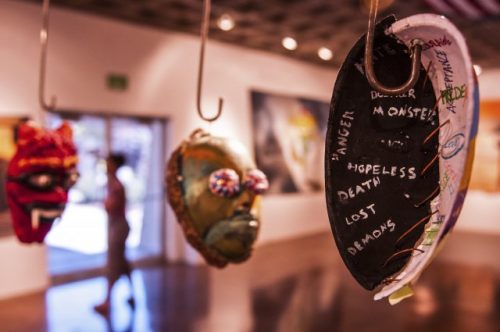
Source: army.mil
How Significant Is Imagination To Treatments And Therapy?
Art Breaks Unspeakable Bounds
A usual occurrence for people who have PTSD is the inability or hesitancy to discuss the incident verbally, even during sessions with a psych expert. Repressing emotions and thoughts is one of the main reasons why this aspect occurs on a deeper level. According to American Counseling Association, expressive arts programs or simply creative arts achieve more output than other treatments when dealing with PTSD patients because many transitions can be obtained even if words are not spoken. Arts is the medium that serves as a bridge between the traumatized person and the counselor. It supports creative techniques that increase creative endeavor.
Professionals Who Use Imaginative Approaches Help Clients In A Lot Of Ways
Joshua Smyth, Ph.D., wrote: The innovative therapies, as highlighted in the Journal of Creativity, are a diverse set of ingenuity in treatment techniques that hold in common that thoughts and feelings about trauma are represented without verbal descriptions of the event(s). Visual and auditory stimuli are used to symbolize the pain and suffering that result from trauma (such as fear, horror, loneliness, and distrust), and the process of expressing oneself is often more important than the finished product.
Does Creativity Work?
“Finding the words to express trauma is a common challenge for trauma survivors. Innovative arts counseling can bridge the shattered memory or painful emotion and a cognitive-linguistic expression of the traumatic experience,” said Marni Rosen, PsyD, a trauma counselor at the Post Traumatic Stress Center (PTSC) in New Haven, Connecticut.
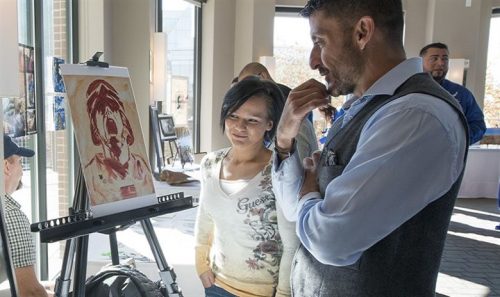
Source: defense.gov
Final Thoughts On Art As Explained By The Experts
The goal of a Counseling Association counselor is something to ponder. Clinical mental health experts in art believe that treatment by creative arts taps into the person’s unconscious memories and thoughts, resurfacing them so that individual members with PTSD can deal with them, ultimately expunging them from their minds and being healed in the process. Part of their supervision task focuses on keeping one’s mental and emotional health.
Frequently Asked Questions
What is information creativity in guidance and counseling?
“Creativity in guidance and counseling” involves using novel methods to assist people in understanding their emotions and experiences. It accelerates therapy and personal growth by using unconventional methods to encourage problem-solving, self-expression, and self-discovery.
Why should a counselor be creative in helping their clients?
They can better tailor their services to each client’s needs. Creative counseling techniques enable clients to tap into their mental imagination and explore new perspectives, making them more engaging, insightful, and effective in encouraging self-awareness, personal growth, and positive change.
Why is creativity important in therapy?
It is important in therapy because it offers alternative avenues for self-expression and exploration beyond traditional talk therapy. It can help individuals access deeper emotions, process traumatic experiences, gain new insights, and find innovative solutions to their challenges, ultimately fostering healing, personal growth, and a sense of empowerment.
What is creativity?
It is the ability to make fresh, valuable, and significant ideas, insights, and solutions, requiring thinking beyond the box. It connects seemingly unrelated concepts and addresses issues with a fresh viewpoint to develop innovative and imaginative results.
What is creativity good for?
It enhances life. Innovative problem-solving, personal growth and self-expression, adaptation and flexibility, critical thinking, collaboration and teamwork, and the discovery of new ideas and possibilities bring joy and contentment.
What is creative and therapeutic?
Life benefits from creativity. It promotes creative problem-solving, individual development, and self-expression, flexibility and adaptability, critical thinking, collaboration and teamwork, and happiness and fulfillment through exploring new ideas and opportunities.
What are the benefits of creativity?
These types of activities increase problem-solving, self-expression, happiness and well-being, stress, cognitive function, innovation and unconventional thinking, and fulfillment and satisfaction.
What is creativity in psychology?
Psychology defines creativity as the ability to make new, useful ideas, solutions, and expressions. It involves creatively blending knowledge, abilities, and experiences to create new and meaningful results, frequently with flexibility, fluency, originality, and elaboration.
Which is the most important factor of creativity?
Divergent thinking is often cited as a key aspect of creativity. Divergent thinking generates new ideas, explores possibilities, and thinks outside the box, resulting in distinctive and creative solutions or expressions.
What are the three constructs in establishing creativity in counseling?
The creativity in mental counselor’s capacity to provide a secure, non-judgmental space for clients to express their thoughts, feelings, and experiences is the first construct. Art therapy, expressive writing, and guided imagery are used to help clients express themselves and evolve. The third construct is the counselor-client collaborative connection, which fosters trust, openness, and shared discovery and encourages the client’s creative engagement and active participation in the therapeutic process.
Everything You Need To Know About Bronde
September 30, 2019
 Source: pixabay.com
Source: pixabay.com
Are you exhausted about getting called a blonde or a brunette along with the connotations that are usually associated with such hair colors? You can gracefully extract yourself from such a situation when you choose to make your locks bronde.
What Does Bronde Mean?
Bronde is the portmanteau for the words blonde and brunette. It means that a person who has dark hair can add several layers of blonde color to it, and vice versa. This way, you do not have to fully transform your crown of glory and look like a different individual.
When Is The Best Time To Be Bronde?
We are not the type to discriminate with the seasons since they all have their confounding factors. Despite that, summer probably is the best time to become a bronde for a brunette. The hot weather gives you the perfect opportunity to get a tan by staying at the beach, after all.

Source: pixabay.com
Now, it is a well-known fact too that the seawater and the heat of the sun may bleach your hair if you remain outside long enough. Thus, the new colors in your hair will seem so natural and blend well to the season.
In a blonde’s case, you can rock the brown highlights in the course of the fall or wintertime. As the leaves’ hue changes and drops to the ground, the fashion world leans towards the earthy shades as well. If you keep your light-colored hair yet follow the trend, you will stick out like a sore thumb. Meanwhile, during the winter, the bronde is more of a necessity if you do not like to get lost in the whiteness of the snow. You want to stand out, my dear, and that can only be achieved once you incorporate browns to your locks.
What Are The Benefits Of Being Bronde?
When you alter your hair color, you show the adventure-loving side of you. A lot of people hate change, which is the only constant thing in the world. You cannot be stuck in your old self for the rest of your life. Well, you can, but then that will be boring.
You may also experiment with colors. There are so many shades in between brown and blonde that will surely enhance the beauty of your hair. We like platinum and honey together as they create a seamless combo. In case you already have super pale or extra dark locks, mixing the two with medium and light brown will be beautiful.
You will not be required to touch up the roots, which is a necessity for the others. The reason is that the coloring does not always have to begin at the uppermost portion of the hair. It can be two inches away from the scalp or halfway to the bottom. You can do this the ombre way; that’s why anyone will think that it is merely part of the plan to have the color near the ends.
Final Thoughts

Source: pixabay.com
You can be bold without wearing short skirts or plunging necklines. You can be gorgeous even if you do not put makeup on. You can go in any place and earn second glances from the people around you without being loud or performing crazy stunts. You can attain all of these when you have bronde hair.
Autism Insights From An Art Therapist
September 27, 2019
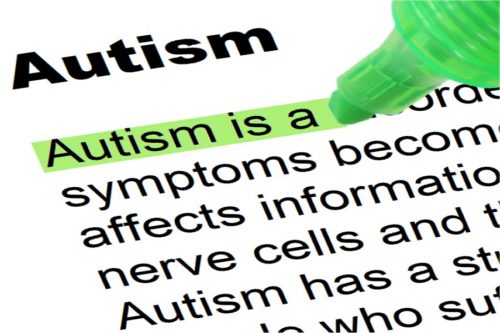
Source: thebluediamondgallery.com
One of the principal trademarks of people with autism spectrum disorders is their difficulty with social and verbal communication.
While there are cases wherein people with autism are mainly non-verbal and are unable to facilitate speech to communicate, there are those who have been struggling with language process and the conversion to smooth, relaxed conversation. People with autism may also have problems with body language and faces. As a result, difficulty in telling if someone is being sarcastic or is joking may occur.
Art therapists are trained in working one-on-one with children and adults who are on the spectrum so that they may build a broad range of skills in such a way that it can be enhanced, and somehow become more effective than verbal interaction.
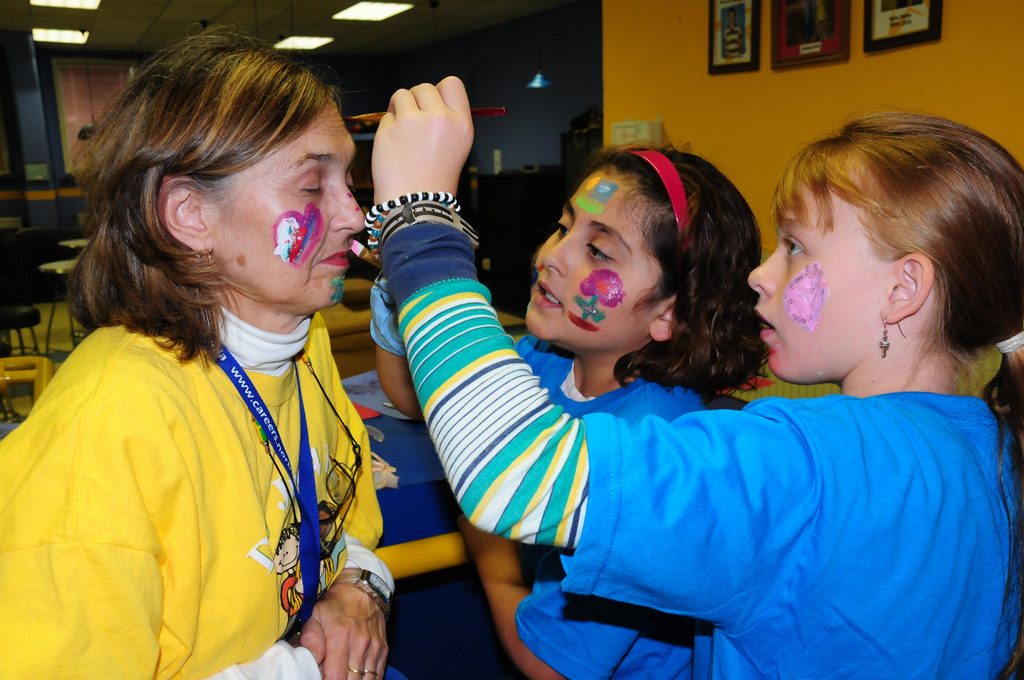
Source: flickr.com
Insights Learned
Art therapists are qualified master’s degree holders and are certified professionals, although not all art therapists have had specific experiences working with autistic children or adults. But those who have shared some vital information on what it’s like when managing people who fall on the spectrum.
- Art Is A Powerful, Interactive Tool
When words and feelings are hard to express, people can turn to art. According to psychologist Robert Gray, M.A. (Art Therapy), “Art therapy can be useful for families with children who have autism by creating community through group work activity, exchanging stories, information and strategies. This can assist in development of verbal communication, vocabulary and hence, social interaction.”
For those who have autism, verbal communication is never easy, but just because people with autism are unable to speak, it doesn’t mean they don’t have thoughts and ideas that they want to express. By engaging in art therapy, autistic people can express sorrow, happiness, and even rage. For parents who have children with autism, art can be quite a discovery, as it opens avenues for self-expression that they never knew was possible.
- Art Therapy Is Not Just Arts And Crafts
Art therapy is not similar to art education. For those who can’t seem to differentiate what basic art is from art therapy, art therapy is a technique that taps into a person’s creative process to enhance and improve physical, emotional, and psychological well-being.
“In addition, art therapy targets the core issue quickly and effectively allowing individuals to see the problem from a different and new perspective. Thus, art therapy offers a space for holistic healing while providing an enjoyable, safe, and effective approach,” Rachela Buonincontri, BA, MC, AT, CCC wrote.
The methods used by art therapists are founded on scientific approach and clinical findings. Though the process of general art and art therapy might be similar, the purpose, strategies, and principles are different.
- Process Outweighs The Outcome
The goal of art therapy is to engross adults and children with autism into expressing what they think or feel through various forms of creative techniques. In art therapy, there is a great deal of emphasis that is focused on the entire process rather than the outcome. Though the result gives therapists and parents or loved ones the awareness of what the person might actually be feeling, the process, however, makes children and adults on the spectrum more expressive and connected with their thoughts and emotions.
- Art Therapy Regulates Self-Actualization
“For children who may not be able to articulate thoughts, sensations, emotions or perceptions, it is one way to convey what may be difficult to express with words,” says Cathy Malchiodi, PhD, LPCC, LPAT, ATR-BC, REAT. “It is also a sensory-based approach that allows the children to experience themselves and communicate on multiple levels—visual, tactile, kinesthetic and more.”
In growing up, people are taught how to deal with disturbing thoughts and feelings; however, people who have autism find this task quite challenging due to sensory integration complications. This means that things around them, especially those associated with sound or touch, can be magnified or minimized. Art therapy can turn this around and make the person less susceptible to destructive habits like hitting or biting when one is upset and instead choosing to squeeze clay to direct negative energy to inanimate objects without being disruptive of himself or his environment. When sensations make them feel uneasy, they can play with sand or water to help their body adjust and calm down.

Source: pixabay.com
Art therapists are mostly experienced in dealing with people, mainly children, who have autism spectrum disorders. In choosing an art therapist, make sure that he or she primarily understands the challenges, issues, and strengths that are specifically associated with the condition.
Getting To Know More About 2 Special Theaters In Branson, Missouri
September 23, 2019
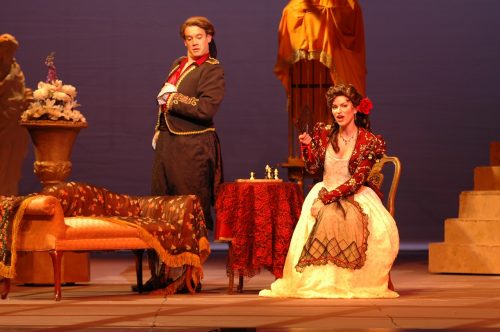
Source: pixabay.com
If you haven’t been to Branson, Missouri, you should know that it serves as home to two amazing theaters that you may not find elsewhere.
Thunderbird Theater
Thunderbird Theater is a performing arts company situated at the core of the West State Road 76’s Strip in Branson, Missouri. It is the place to go to every time that you wish to forget the noise that’s the music of the new generation. The sounds there will help you remember the old form of rock and roll music at its finest.
What draws people’s attention is the fact that the venue administrators have kept the theater similar to what you may have seen from the 60s movies. Due to this, the visitors can feel what it is like to witness a live performance in a simple cinema house in the past. In addition to that, Thunderbird has a seating capacity of 700. The number is slightly higher than what one can assume by just looking at the arena from the outside. However, it is meant to allow music lovers to enjoy listening to great, old songs through a high-class sound system and under the bright lights. Other than that, the theater serves as a regular show platform for a couple of Branson’s favorite singers, Peter Lemongello and Kitty Kelly. In case you have time, you can see them, as well as various artists performing the hit songs which have taken the entire United States by storm.

Source: pixabay.com
Branson Hall Of Fame Theater
Once you set foot in Missouri’s Branson Mall, it will not take a while before you discover inside the Branson Hall of Fame Theater. It is a performing arts stage that often gets grazed by the presence of various singers, such as Elvis Presley, Neil Diamond, Johnny Cash, and Garth Brooks, to name a few.
In truth, the theater has not been in operation when these individuals captured the hearts of many with their passion for music. Their hit songs, however, are being brought back to life by several impersonators who can imitate not only their voice but also the way they speak, walk, and dress up. The said actors include Bill Chrastil, KB Jacks, and Tracy Lynn De Mille. Each of them possesses the ability to mimic even the mannerisms or nuisances of these celebrities who serve as pillars for diverse music genres. Whereas other fanatics show their unwavering love to the singers by creating collages or playing their songs at any chance, the tribute artists do it in a manner that they can look and sound like the original American idols who, unfortunately, have already gone on to the next life.
Going to the Branson Hall of Fame Theater can change the way you look at museums or art exhibitions that pay homage to some of the most famous vocalists in the entertainment world. Though Hollywood and Vegas have their own sets of impersonators, no one can beat the theater’s exceptional artists when it comes to talent and years of experience.
Final Thoughts

Source: pixabay.com
Places like the Thunderbird Theater and Branson Hall of Fame Theater are hard to come by these days. It is mostly due to the advancements that event coordinators continuously embrace along the way. Such venues offer the audience a rare opportunity to watch different music numbers in a unique setting when you think of it based on how the present-day movie houses appear. Feel free to check them out if ever you come to Branson, Missouri.
Cheers!
Color Theory And Its Effect On Our Physical And Mental States
September 20, 2019
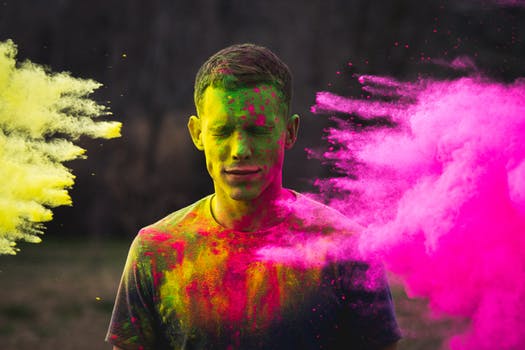
Source: pexels.com
Was there ever a time when you walked into a room and then suddenly you experienced a shift in your mood?
Color Theory
Science has proven that color directly affects a person’s behavior and health. Some colors can uplift mood, and some colors can make you feel a bit gloomy.
That is one reason why alternative therapies have now considered using the concept of color theory or color psychology to help people heal. Colors are believed to affect a person’s physical and mental state.
“The most important thing to know about colors, and our emotional response to them, has to do with colors’ saturation and brightness. Saturation is how pure a color is. Less saturated colors are more grayish, so khaki green is less saturated than kelly green. Brightness is, as you’d expect, basically how light a color seems. Colors that are less saturated but bright, such as a bright sage green, are relaxing, and those that are more saturated and less bright, such as sapphire blues, are more energizing to look at,” explains Sally Agustin, PhD.
Listed below can be your guide as to how color affects you and the people around you. But depending on the shades, some effects might change.
Purple enhances wisdom, spirituality, and sophistication. It develops a sense of respect, creates some air of mystery. Others use the purple color as it represents royalty and wealth and it attracts prosperity.
Red is a stimulant, stimulating interest and boosts enthusiasm. If you come to a party wearing a vibrant red dress, you will unquestionably draw people’s attention.
Yellow glows with optimism and happiness. Yellow creates high energy and enhances our creative thoughts. The shades of golden yellow invite us to a future that seems to promise something that is positive.
Blue represents something that is constant in our lives, like the blue sky and the blue sea. It also creates some feeling of calmness and serenity. Blue is a color that is truthful and loyal. It helps someone focus. Some shades of blue, however, can seem cold, uncaring, and unappetizing.
Pink gives a fun, youthful feeling, something that is exciting, sensual and passionate. That can be the reason why when a man attempts to convey how passionately he feels for someone; he prefers to give pink flowers. Pink represents happiness and lightheartedness.
Gray is said to be the color of knowledge and wisdom and considered as classic and refined. It is a color that carries a sense of dignity and authority.
Black is the color that is authoritative and powerful and can efficiently evoke intense emotion. It also represents void and emptiness.
White is cleanliness, purity, and neutrality. A house painted in white seems to represent one happy home. Your doctor in his white coat is someone who is pleasant to look at. A bride wearing a pure white gown looks like a happy soul ready to offer herself to someone who deserves her.
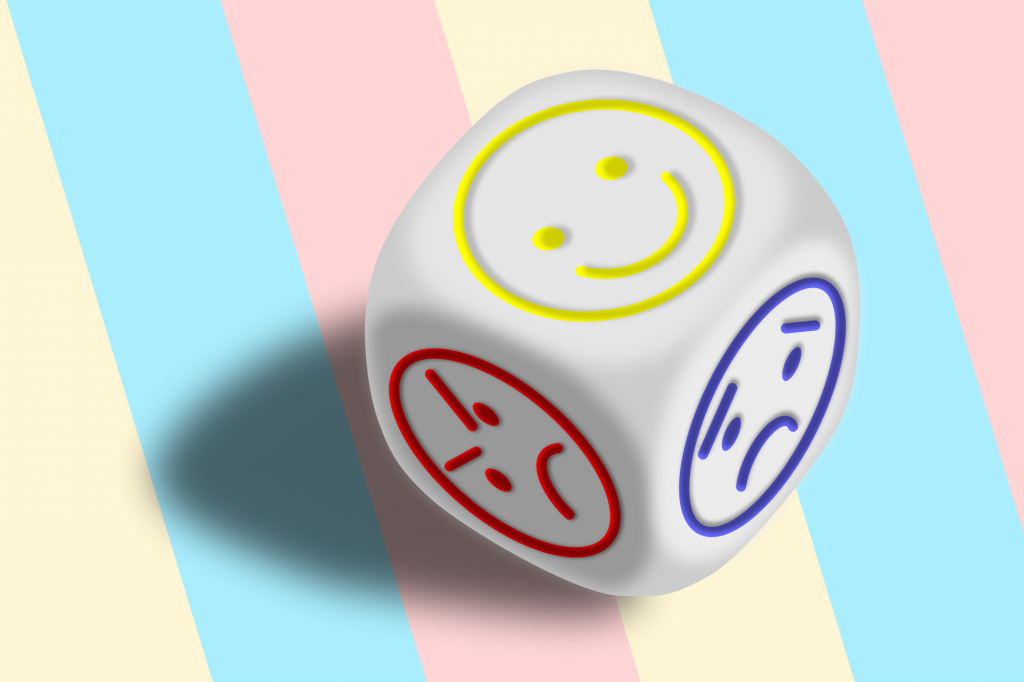
Source: wikimedia.org
Uses Of Color Theory
Marketing and advertising use color theory because they believe that understanding and utilizing the psychological effects of color is a powerful medium to persuade people to buy their products. Colors can make consumers feel hungry and attract people as they project positive vibes and help encourage trust.
“Color is ubiquitous and is a source of information. People make up their minds within 90 seconds of their initial interactions with either people or products. About 62-90 percent of the assessment is based on colors alone. So, prudent use of colors can contribute not only to differentiating products from competitors, but also to influencing moods and feelings – positively or negatively – and therefore, to attitude towards certain products,” says Satyendra Singh PhD, a professor from the University of Winnipeg.
Healthcare utilizes color theory in creating an environment that is calm, safe, inspiring, and healing. In designing hospitals, people consider colors for its psychological effects to stimulate
- healing
- motivation
- efficacy
- efficiency

Source: flickr.com
Hospitals commonly use pale blue and green because of their soothing and refreshing effect, which create a relaxing environment that allows the patient to rest and also encourage them to heal faster.
The effects of these colors are not only beneficial for patients but also for exhausted staff and anxious families of patients as well.
Color In Our Daily Ordinary Lives
According to Kendra Cherry, MS, “color is a powerful communication tool and can be used to signal action, influence mood, and even influence physiological reactions.” She also adds, “Color can play an important role in conveying information, creating certain moods, and even influencing the decisions people make.”
Color has always been part of our lives. It is often associated with our emotions. It creates a sense of nostalgia, stimulates the brain, and brings back memories.
Just merely looking at the red color triggers an increased heart rate causing additional adrenaline to be pumped up into our bloodstream.
Science explains why such emotions occur, while to others it remains a mystery. However we perceive it, we can’t deny the fact that every color has its effect on us that goes beyond our normal color vision, may it be in the positive or negative light.
Disassembling The Grand Piano
September 16, 2019

Source: pixabay.com
Are you one of those individuals who are wondering how a grand piano became as grandiose as it looks like or how it produces sound? Well, keep on reading this so that you do not have to disassemble one to know such things physically.
As for its sophistication, do not be shocked anymore if its beauty seems never to fade away because every grand piano that we see anywhere passed through the gifted hands of professional craftsmen who then make use of the delicate process to handcraft every piece of it entirely. It is the King of the Instruments that we are talking about, so the expertise of any person who makes a grand piano is of high importance.
Now, about the sound, it will be much better for you and for the entire human world (no pun intended) if you take a look at the parts of a grand piano below.
Case
It is luscious curves on the case of the grand piano that makes it distinct among all the other keyboards invented through time. The craftsmen mold it from a piece of hardwood and isolate it in an enclosed manufacturing area until such time that portions of the grand piano are ready to be pieced together.
Soundboard
The soundboard is the “softie” part of the grand piano because it is usually made out of spruce wood which is a softwood that is known to cause more vibrant tones and thicker frequencies than a hardwood. Because of its softness, it captures the tremors from the treble strings so well and radiates throughout the grand piano. It serves as an asset for the instrument.

Source: pixabay.com
Frame
The frame is the skeletal part of this instrument. It is usually made out of iron so that it can efficiently hold the tension from the strings. You should know that it is not only the strings that are getting too used when a pianist plays so hard. The frame is useful as well since it is the end receiver of all the pressure coming from the lines.
Strings
The strings used in grand piano are from steel. It is much stronger than iron for the reason that they are in the epicenter of the intense vibrations. Flimsy strings cannot make do for this luxurious instrument. The idea is that the longer the string is, the lower the pitch it produces. The shorter the line is, the higher is the pitch that comes from it.
Action
The action is the “starter of action” for the whole grand piano. It is attached to the keyboard. Thus, when any of those keys are depressed, it sends a signal to the hammers. It allows certain strings to produce a sound.
Pedals
The pedals add more flavors to the sound that the strings are producing. A grand piano usually has three pedals called una corda, sostenuto, and damper, which are located from far left to far right. These are typically used to soften the note, to sustain the currently-depressed notes, and to sustain all notes, respectively.
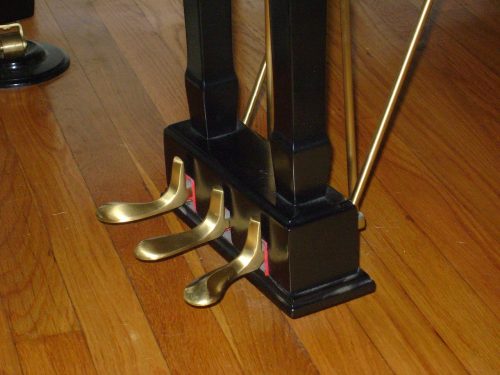
Source: pixabay.com
Final Thoughts
Knowing every part of piano matters, especially if you want to learn how to play it. This instrument is no different from a car, in the sense that you need to know the specifications before buying one. Otherwise, you may find yourself with something that you can’t use.
The Art Of Nature Designed To Nurture Us
September 13, 2019

Source: pexels.com
We may have failed to notice that art is everywhere. Take your time in the morning and breathe in and breathe out. Open your eyes to the beauty of nature’s art. It is, after all, what inspired human-made art. It can also play a significant role in promoting better overall health, and it is the reason why being close to nature gives us a sense of tranquillity and wellness.
If we take our time to appreciate the art of nature, we’ll be able to harness its incredible power of healing and promoting a well-balanced life. It will encourage positivity and happiness which should be the natural state of our being.
“People don’t have to head for the woods to enjoy nature’s restorative effects,” Rachel Kaplan, Ph.D., and Stephen Kaplan, Ph.D., emphasize. They said, “Even a glimpse of nature from a window helps.”
Arts Of Nature That We Didn’t Realize We’re Missing:
Sunrise
Sunrise usually happens between the hour of 5:00 am and 6:00 am. When was the last time you laid eyes on it? Seeing the sun peek in the morning just before everyone is fully awake can give a sense of hope. It is the mark of a new day, and it’s a perfect time to jog or do some exercise to condition the body for the tasks ahead.
Michael Terman, Ph.D., says, “Getting enough light, and at the right time, offers a way of dealing with the problems created by light deprivation. Best of all, the intervention is environmental, not pharmaceutical.”
Sunset
Sunset marks the end of the day. For some, it means resting time after a long day at work. It is the sun saying goodbye for a while and saying, “until tomorrow.” Try going to a place where you’ll be able to view the sun setting. Appreciate the color of the sun fading to darkness. Feel the wind turning cold, and you’ll know it’s a day well spent.
Jia Wei Zhang, Ph.D., found out that,“the positive emotions aroused by natural beauty led to increased prosociality feelings and behaviors characterized by concern for others.”
Rainbow
The rainbow is a magical phenomenon which is caused by the reflection and refraction of light from the sun to the droplets of water from the clouds down to the earth. It creates a magnificent art consisting of different colors painting the sky. Nowadays, we often ignore the rainbow because science has already explained what it is, but show the rainbow to a child and see how his eyes glow with amazement.
Ocean Or Sea
Have you ever been to the beach? Try sitting by the shore and just look at how the water meets the mountains and the sky. It is just like in most paintings. The only difference is that you see a moving masterpiece.
Sky
If you look at the sky, especially around 4:00 pm onwards before sunset, you will notice how blue it is, starting from the darkest shade of blue to the lightest. The color blue gives a sense of calmness and relaxation to the person looking that’s why it is an excellent view to diffuse stress.
Stars
Stargazing is also suitable for our mental health as it provides a peaceful time for our mind to ponder. It improves our comprehension and perspective in life. A person fond of stargazing has a certain depth in his way of thinking.

Source: pexels.com
Moon
The moon has been around for quite some time. Some of the people in our history even treated it as their god. Nowadays, only a few people take notice of it. Looking at the moon provides a sense of security. It somehow makes someone feel that they are not alone.
Flowers
Flowers have a variety of colors, and if you look at them in the distance, they sure look like a painting. Holland is famous for having such beautiful flowers that look like a masterpiece when you see them from afar.
In their study, “indoor plants can provide psychological benefits such as stress-reduction and increased pain tolerance.”
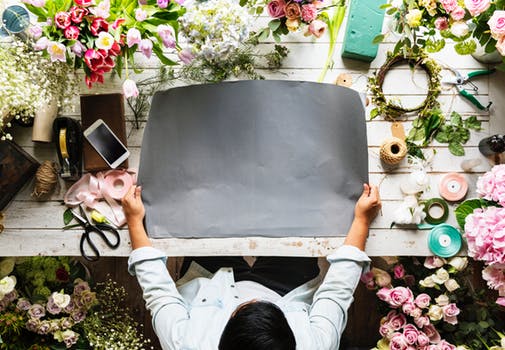
Source: pexels.com
Art is undeniably a significant help to our overall health. It aids us in relieving stress, helping people with depression and anxiety. The art of nature is the ultimate masterpiece men can lay eyes upon, but we seldom take it for granted. If you are feeling down and depressed, take your time to look around and appreciate the artistic wonder of nature. After all, it is the best, yet it is free.